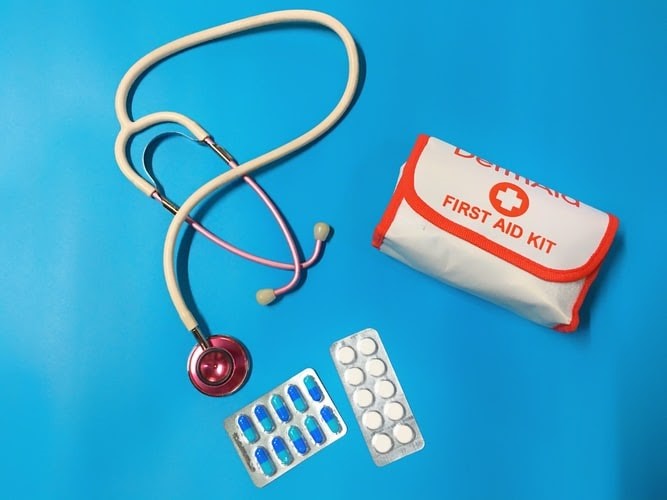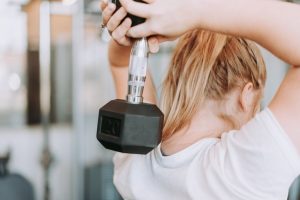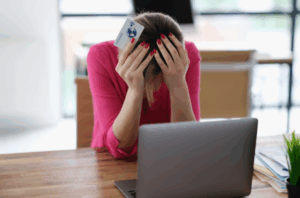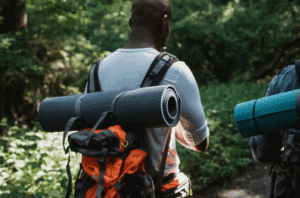
It is important to know every piece inside your first aid kit. In cases of emergency, knowing what and how to do first aid is crucial. If you’re not familiar with what’s inside your first aid kit, what are their uses, and how to use them can possibly lead to wrongful actions that can make situations worst.
The Basic First Aid Kit Checklist
First aid kits are customisable depending on your family’s daily activities and hobbies. A basic first aid kit commonly used in households includes:
- A first aid booklet
- hypoallergenic tape
- crepe bandages that come in different width and triangular bandages
- adhesive dressing strips that also come in different sizes and gauze swabs
- combine dressing pads (10cm x 10cm) and non-stick dressing pads (7.5cm x 10cm)
- sterile eye pads and alcohol swabs
- stainless steel scissors (sharp/blunt) 12.5cm
- disposable gloves
- stainless steel pointed splinter forceps or tweezers
- shock (thermal) blanket
- safety pins
- sterile saline tubes/sachets
- disposable resuscitation face shield
- antiseptic skin swabs and stop itch cream
How To Customise First Aid Kits?
First Aid Kit For Household Use
You can customise your household first aid kits by adding items according to the number of people who live in your house. Also, take into consideration age and hobbies. If you have children who play sports, you can include thick crepe badges or pressure immobilisation bandage.

First Aid Kits For Cars
Apart from what’s already in your basic first aid kit, if you are to store it in your car, it is essential to add a highly reflective safety triangle and vest. These are important in case your car breaks down in the middle of traffic or near the road.
First Aid Kits For Camping
When you go camping, it is inevitable for some to earn some scratches or insect bites. So, to ensure your first aid kit is complete and ready for camping mishaps, pack some heavy crepe bandages, instant cold packs, plastic bags, whistle, compass, torch, disposable ponchos, and some glow sticks for the evening. In some countries like Australia, it’s good to have a snake bite kit for camping.
First Aid Kit For Boats
When you’re on a boat, there could be some fortuitous incidents that may occur during your sail. Thus, a disposable poncho is needed in case of rain, plastic bags, a whistle for emergency help, glow sticks, and vinegar to combat stingers.
First Aid Kits For Babies
Apart from the items in your basic first aid kits, babies often get colds and fever, so a digital thermometer is vital. Also some pain relievers such as paracetamol or ibuprofen. Additionally, plastic syringes are important to ensure pristine dosing.
First Aid Kits For Specific Medical Conditions
If you have a family member who suffers from a specific medical condition, it is best to separate his/her first aid kit with extra items (medicines and medical equipment) specific to the sickness.
Where To Store First Aid Kits?
How To Use The Items Inside A First Aid Kit?
- for covering and packing bleeding wounds
- used to help regulate body temperature
- used to provide light support for strains and sprains
- use to immobilise joints and provide additional support to the fractured area
- used as a sling to help immobilise fractured limbs, joints or also used as a pad to help control bleeding and secure injuries
- used for personal protection when mouth-to-mouth resuscitation is needed
- essential for flushing eye debris and for cleaning cuts and grazes
- these are small strips of gauze used to aid minor cuts and skin grazes. Adhesive strip dressing is commonly known as bandaids.
- used for abraded, scraped or burnt skin. Important note: don’t use adhesive dressings for burns.
- it is used to control bleeding and help reduce infection.
- these are elastic bandages that help create pressure, keep dressings in the right place, help reduce inflammation, and provide extra support.
- helps flush out dust, insects, sand or particles that got inside the eye.
How To Maintain First Aid Kits?
- Replace the items you used with new ones.
- Check your kit every after use for missing items, if not you can at least check every three months.
- Make sure that every item works perfectly.
- Make sure every sterile item are sealed.
- Check for expired items and replace them.






